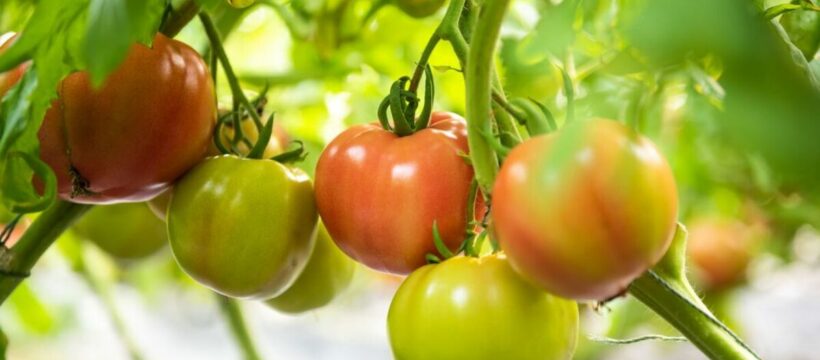Alan Titchmarsh offers tips on watering tomato plants
There’s nothing like biting into a juicy, sweet tomato fresh from the garden on a summer’s day. Tomatoes also make the perfect addition to summer salads, pasta dishes and soups. Tomatoes are relatively easy to grow from seed at home, however, they do require a careful eye to be kept on them, especially when it comes to feeding and watering. There are two main types of tomato plants cordon, also known as indeterminate, and bush tomatoes which are known as determinate.
Cordon tomatoes are the most common and are single-stemmed plants that can grow to be a couple of metres tall.
Bush types will grow a plethora of stems and are sometimes known as dwarf tomatoes as they’re smaller.
For those looking to grow their own tomatoes this year, gardening expert Sarah Raven has shared her advice for looking after tomato plants including when to plant them and how to grow them.
Sarah explained what type of soil tomatoes prefer to get them “off to a flying start”.


She told Express.co.uk: “Tomatoes like a rich moisture retentive soil and will need regular liquid feeds once they start to flower and fruit.
“As you are most likely to be growing these in pots or grow bags you have the chance to renew the soil completely each year.
“A peat-free multi-purpose compost will be fine, or make your own mix by adding home-made compost or farm-yard manure to get the plants off to a flying start.
“Tomatoes need as much sun as they can get. A polytunnel or glasshouse is ideal, but some varieties are very happy outside in a sunny sheltered spot, you can even grow ‘Tumbling Tom’ in a window box or hanging basket.”
Don’t miss…
‘Main mistake’ peace lily owners make that prevents the plant to bloom[LATEST]
‘Homemade spray’ that ‘works the same as weed killer’ to eliminate ivy[INSIGHT]
‘Essential’ gardening jobs you ‘need’ to complete in spring[UPDATE]
Tomato plants need to be started early on in the year so they can produce fruit and be harvested in late summer/early autumn.
Sarah’s tip for deciding when to plant tomatoes outside is to do it when it’s “warm enough to eat outside without wrapping up in layers”.
For those who have the space to grow tomatoes from seed under a cover, they should be sown in late February or early March in a warm environment.
The gardening expert said this should give gardeners decent-sized tomato plants that will then be ready to go into greenhouse beds or growbags at the end of April, when cooler nights and frosts are less likely.
Looking for a new home, or just fancy a look? Add your postcode below or visit InYourArea
Those who can grow tomatoes from seed outside should wait until the end of May to ensure there isn’t a surprise frost that could kill them off.
It’s preferable to sow tomatoes seven or eight weeks before they can be planted out as gardeners won’t want their plants outside if there’s a sudden drop in temperatures.
When planting tomato seeds, sow them in the usual way in a seed tray and only transport them into individual small pots when they have two “true leaves”.
However, Sarah has a “personal preference” when it comes to sowing her tomato seeds. She said: “My personal preference is to sow two tomato seeds into coir or Jiffy pellets, which can then be kept somewhere warm, I like to use my heated polytunnel benches.
“Once their roots have filled the pellet, I tear off the net and pot them on into a 9cm (3.5in) pot. After two or three weeks, the roots will also fill that, from which I’ll then plant them in a two-litre pot that is supported with canes and string stuck in at the side.
“Once that has also been filled, your tomatoes are ready for final planting outside.
“Tomatoes will still need to gradually acclimatise to your outdoor conditions before planting out in early summer.
“Add plenty of compost or well-rotted manure prior to planting and create a shallow circular reservoir around the plant, this will help it to retain water.
“I’d recommend leaving 60-90cm (24-36in) between each plant and planting them deep, ideally sinking to a depth of 0.5cm below the seed leaves.”
Source: Read Full Article
